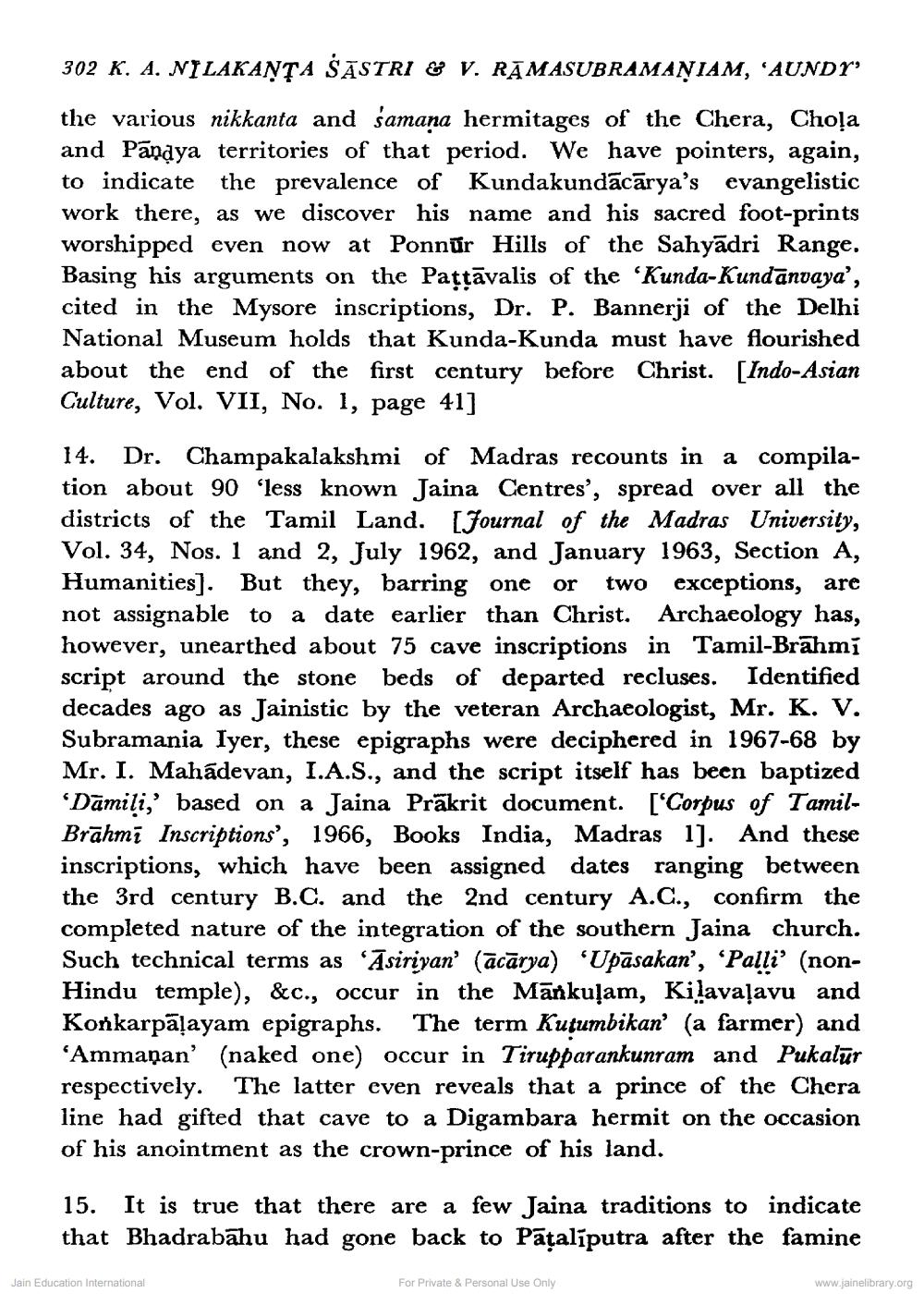________________
302 K. A. NILAKANȚA ŠĀSTRI & V. RĀMASUBRAMANIAM, 'AUNDY: the various nikkanta and samana hermitages of the Chera, Chola and Pāpaya territories of that period. We have pointers, again, to indicate the prevalence of Kundakundācārya's evangelistic work there, as we discover his name and his sacred foot-prints worshipped even now at Ponnūr Hills of the Sahyādri Range. Basing his arguments on the Pattāvalis of the ‘Kunda-Kundānvaya', cited in the Mysore inscriptions, Dr. P. Bannerji of the Delhi National Museum holds that Kunda-Kunda must have flourished about the end of the first century before Christ. [Indo-Asian Culture, Vol. VII, No. 1, page 41] 14. Dr. Champakalakshmi of Madras recounts in a compilation about 90 'less known Jaina Centres', spread over all the districts of the Tamil Land. [Journal of the Madras University, Vol. 34, Nos. 1 and 2, July 1962, and January 1963, Section A, Humanities]. But they, barring one or two exceptions, are not assignable to a date earlier than Christ. Archaeology has, however, unearthed about 75 cave inscriptions in Tamil-Brāhmi script around the stone beds of departed recluses. Identified decades ago as Jainistic by the veteran Archaeologist, Mr. K. V. Subramania Iyer, these epigraphs were deciphered in 1967-68 by Mr. I. Mahadevan, I.A.S., and the script itself has been baptized
Dāmili,' based on a Jaina Prākrit document. ['Corpus of TamilBrāhmī Inscriptions', 1966, Books India, Madras 1]. And these inscriptions, which have been assigned dates ranging between the 3rd century B.C. and the 2nd century A.C., confirm the completed nature of the integration of the southern Jaina church. Such technical terms as "Āsiriyan' (ācārya) 'Upāsakan', 'Palli' (nonHindu temple), &c., occur in the Mānkuļam, Kilavaļavu and Konkarpāļayam epigraphs. The term Kutumbikan' (a farmer) and ‘Ammañan' (naked one) occur in Tirupparankunram and Pukalur respectively. The latter even reveals that a prince of the Chera line had gifted that cave to a Digambara hermit on the occasion of his anointment as the crown-prince of his land.
15. It is true that there are a few Jaina traditions to indicate that Bhadrabāhu had gone back to Pāšalīputra after the famine
Jain Education International
For Private & Personal Use Only
www.jainelibrary.org




